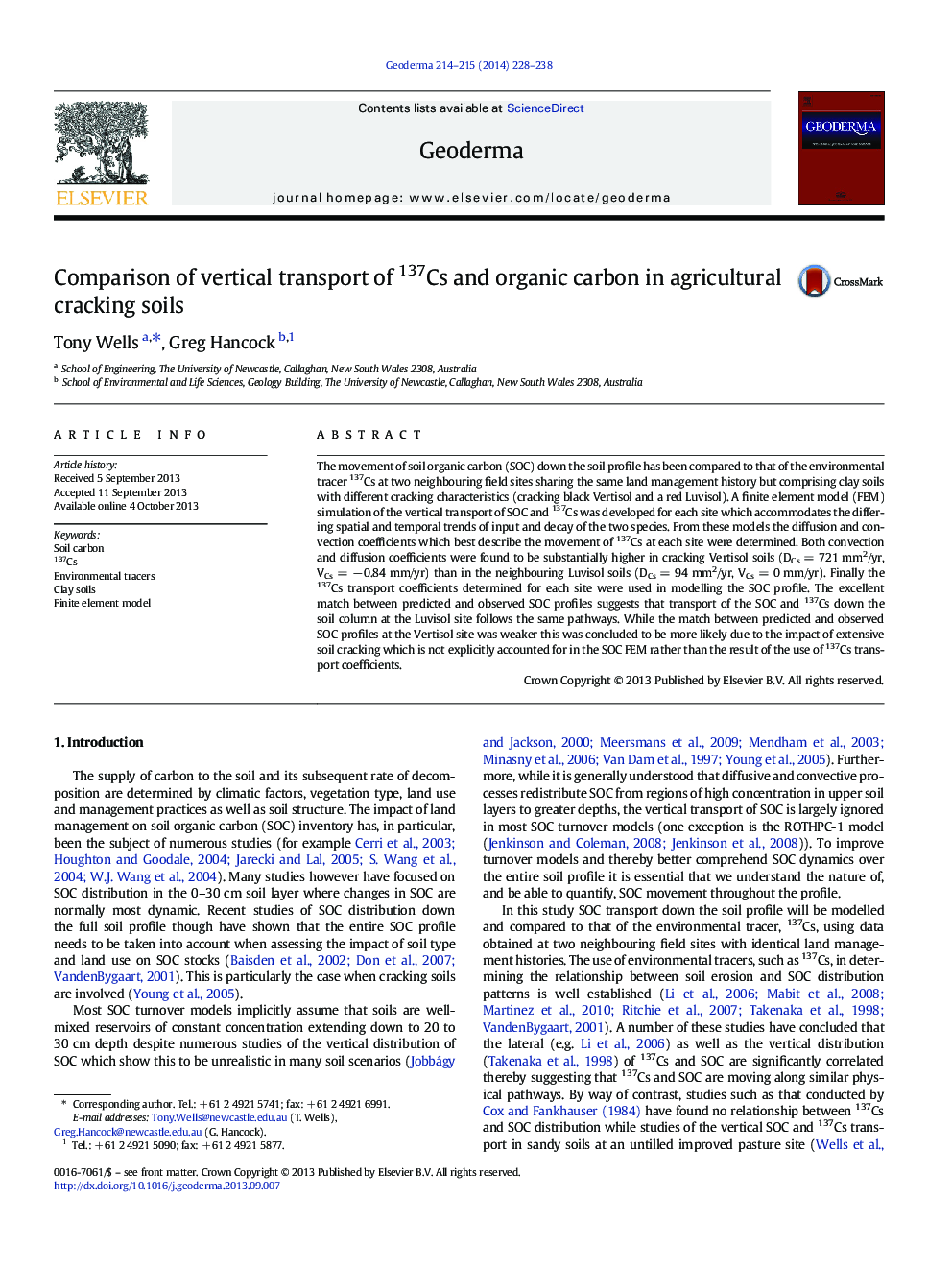| Article ID | Journal | Published Year | Pages | File Type |
|---|---|---|---|---|
| 6409076 | Geoderma | 2014 | 11 Pages |
â¢SOC and 137Cs profiles to bedrock are compared at 2 neighboring field sites.â¢Profiles of both species were simulated using a Finite element approach.â¢Land use history and vertical transport were included in the models.â¢FEM simulations indicate the two species are transported by the same processes.â¢We simulate the evolution of the SOC profile over a 60 year period.
The movement of soil organic carbon (SOC) down the soil profile has been compared to that of the environmental tracer 137Cs at two neighbouring field sites sharing the same land management history but comprising clay soils with different cracking characteristics (cracking black Vertisol and a red Luvisol). A finite element model (FEM) simulation of the vertical transport of SOC and 137Cs was developed for each site which accommodates the differing spatial and temporal trends of input and decay of the two species. From these models the diffusion and convection coefficients which best describe the movement of 137Cs at each site were determined. Both convection and diffusion coefficients were found to be substantially higher in cracking Vertisol soils (DCs = 721 mm2/yr, VCs = â 0.84 mm/yr) than in the neighbouring Luvisol soils (DCs = 94 mm2/yr, VCs = 0 mm/yr). Finally the 137Cs transport coefficients determined for each site were used in modelling the SOC profile. The excellent match between predicted and observed SOC profiles suggests that transport of the SOC and 137Cs down the soil column at the Luvisol site follows the same pathways. While the match between predicted and observed SOC profiles at the Vertisol site was weaker this was concluded to be more likely due to the impact of extensive soil cracking which is not explicitly accounted for in the SOC FEM rather than the result of the use of 137Cs transport coefficients.
